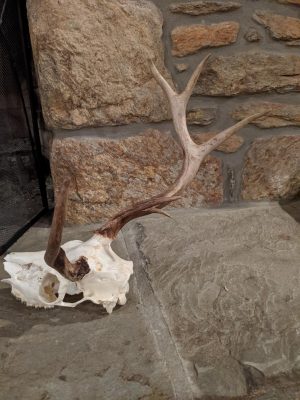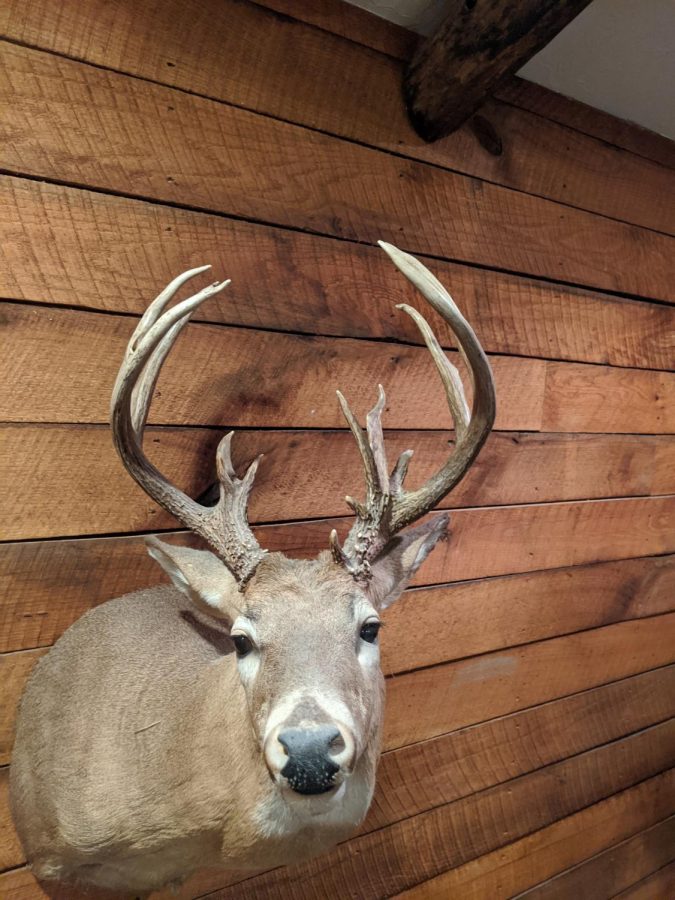How Antlers Change in Buck From Year to Year
December 22, 2020
A buck’s antlers grow differently from year to year. The mass and length of the antlers will increase from year to year unless a buck hurts them during the velvet season. Deer’s antler size is determined by past genetics and protein input which allows antlers to grow more.
- Yearling bucks 1-1 ½ years- These young deer commonly have less points; instead, they have like spikes or forks. If protein/food is good in the area, the buck could sprout a 6 to 8 point rack.
- 2 ½ year old bucks- Most 2 ½ year olds have 4 or more points on each side based on genetics. The buck antler bases will be smaller than his eye sockets.
- 3 ½ year old bucks- Their antlers are typically way outside ears and will likely have 4 or more points on each side. Horns are thicker at the base.
- 4 ½ year old bucks- At this age, 90 % of antler potential has been reached. Antler bases will be larger than eye sockets. Their points can be anywhere based on its genetics.
- 5 ½ year old bucks- At this age, antlers have met full potential. Many of which do not reach this age, due to hunters and other predators. Their points can be anywhere based on its genetics.

The growth cycle begins around 4 months when a buck’s pedicles are formed. Pedicles or “buttons” (as people call them) form around 4-5 months and stay for about a year. At 1-1 ½ years, bucks begin to grow their first noticeable antlers. It can be spikes or over 10 points, (it is all determined by genetics).
Yearling bucks usually have thinner horns, but if the buck has good genetics and a sufficient amount of protein, horns can be bigger.
During a white-tail buck’s summer months, a buck gets “velvet” which is like a soft hairy skin on the outside of the rack. Antlers begin growing in velvet around March and can go to the end of August.
For white-tail, a yearling buck grows ⅛ inch of horns everyday, while an older buck grows about ¼ inch each day.
Deer must be careful of hitting their antlers while they are growing in velvet, because they are soft and hitting them may damage growth for that year. When growing stops, the buck will rub off the velvet from its antlers, which over time turns to dead bone cells around the rut.
Around January and February, buck lose their horns which turn into “sheds” on the ground. After losing their horns the process begins again.
In order to maintain a healthy deer population, there are many laws and regulations for hunters. One, specifically, are Antler Restrictions.
According to the Pennsylvania Game Commission’s official regulations, found in Hunting Trapping Digest, a point is “any antler projection at least one inch in length from base to tip”. The main beam tip is counted as a tip regardless of length.
A hunter applies for an antlered tag and can apply for up to three doe tags. For a deer to be considered “Antlered” in Pennsylvania, it must have three points on one side but a total of six points. A hunter may not kill a deer that doesn’t meet these requirements.
The reason for these regulations is to allow the deer to grow and be a larger rack.


